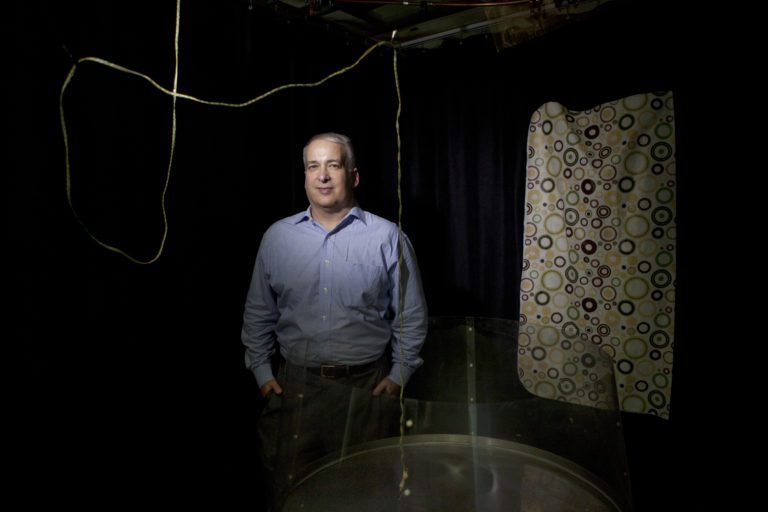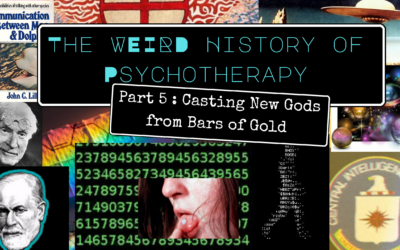
Dr. Todd Sacktor at his SUNY Downstate lab, Brooklyn. NY.
Memory is one of the most fundamental and fascinating aspects of cognition. Our ability to form, retain, and retrieve memories shapes our sense of self, our relationships with others, and our understanding of the world around us. Yet despite its centrality to the human experience, the precise mechanisms by which memories are formed, stored, and maintained in the brain have long remained elusive.
In recent decades, however, remarkable progress has been made in unraveling the molecular and cellular basis of memory. One of the pioneers in this field is Todd Sacktor, a neuroscientist whose groundbreaking work has shed new light on the biochemical complexity underlying learning and memory. Sacktor’s research, focusing on a brain enzyme called protein kinase Mzeta (PKMζ), has revealed a dynamic interplay of protein synthesis and degradation that underlies the formation and maintenance of long-term memories.
This paper will explore Sacktor’s key findings and their implications for our understanding of memory and cognition. We will examine how Sacktor’s work builds on and extends previous research on synaptic plasticity and long-term potentiation (LTP), the cellular mechanisms thought to underlie learning and memory. We will also consider the broader significance of Sacktor’s work for fields such as cognitive psychology, neurology, and artificial intelligence, and discuss future directions for research on the molecular basis of memory.
Protein Kinase Mzeta and Memory Maintenance
At the heart of Sacktor’s work is a focus on protein kinase Mzeta (PKMζ), an enzyme that plays a critical role in the maintenance of long-term potentiation (LTP) and memory. LTP is a form of synaptic plasticity in which repeated activation of a synapse leads to a long-lasting increase in the strength of the synaptic connection (Bliss & Collingridge, 1993). This strengthening of synaptic connections is thought to be a key mechanism underlying learning and memory formation.
Sacktor and his colleagues first identified PKMζ as a constitutively active form of the enzyme protein kinase C (PKC) that is expressed in the brain (Hernandez et al., 2003). Unlike other forms of PKC, which require secondary messengers for activation, PKMζ is autonomously active, constantly working to maintain the increased synaptic strength associated with LTP and memory.
In a series of elegant experiments, Sacktor’s team demonstrated that inhibiting PKMζ activity in the brains of rats erased long-term memories that had been formed days or even weeks earlier (Pastalkova et al., 2006). Remarkably, these memory erasures were highly specific, targeting only the memories associated with the synapses where PKMζ was inhibited. Other memories remained intact, as did the animals’ ability to form new memories.
These findings suggested that PKMζ activity is critical for the persistence of long-term memories over time. Without the ongoing enzymatic activity of PKMζ, the synaptic changes associated with LTP gradually decay, leading to the erosion and eventual loss of the memory trace.
Protein Synthesis, Degradation, and Memory Dynamics
Further research by Sacktor’s group revealed that the role of PKMζ in memory maintenance is intimately tied to the broader dynamics of protein synthesis and degradation in the brain. In a 2010 study, Sacktor and colleagues showed that the formation of long-term memories requires not only the synthesis of new proteins, but also the simultaneous degradation of a subset of proteins that normally inhibit PKMζ activity (Sacktor, 2010).
This balance of synthesis and degradation enables a kind of molecular switch, in which the induction of LTP leads to the rapid synthesis of PKMζ and other plasticity-related proteins, while also triggering the degradation of inhibitory constraints on PKMζ activity. Once this switch is flipped, ongoing PKMζ activity can maintain the synaptic changes associated with the memory for extended periods of time.
Importantly, Sacktor’s work also sheds light on the dynamic nature of memory over time. Rather than being a static, crystallized entity, memory appears to be in a constant state of molecular flux, requiring the continuous activity of enzymes like PKMζ to maintain the integrity of the memory trace. This view challenges traditional models of memory as a passive storage system, instead pointing to memory as an active, dynamic process that requires ongoing molecular maintenance.
Implications and Future Directions
Sacktor’s work on the molecular mechanisms of memory has profound implications for our understanding of cognition and the brain. By revealing the critical role of enzymes like PKMζ in memory maintenance, Sacktor has opened up new avenues for research into the biochemical basis of memory formation, storage, and retrieval.
One exciting area of future research is the potential clinical applications of Sacktor’s findings. By targeting the molecular pathways involved in memory maintenance, it may be possible to develop new treatments for memory disorders such as Alzheimer’s disease and post-traumatic stress disorder (PTSD). For example, drugs that enhance PKMζ activity could potentially help to preserve or restore memories in individuals with Alzheimer’s, while inhibitors of PKMζ could be used to selectively erase traumatic memories in individuals with PTSD.
Sacktor’s work also has important implications for the field of artificial intelligence (AI). By shedding light on the molecular mechanisms of memory formation and maintenance in the brain, Sacktor’s findings could inform the development of more biologically realistic models of learning and memory in AI systems. Such models could potentially lead to the creation of AI systems with greater flexibility, adaptability, and robustness, capable of forming and retaining complex, context-dependent memories in a manner more akin to the human brain.
Finally, Sacktor’s research underscores the incredible complexity and dynamism of the biochemical processes underlying cognition. Memory, it appears, is not simply a matter of flipping a molecular switch and storing information in a static, crystallized form. Rather, it is a continuous, active process, requiring the coordinated activity of a vast network of enzymes, proteins, and signaling pathways. By revealing the intricacies of this molecular dance, Sacktor has given us a new appreciation for the extraordinary complexity and beauty of the human mind.
Todd Sacktor’s pioneering work on the molecular mechanisms of memory has revolutionized our understanding of how memories are formed, stored, and maintained in the brain. By revealing the critical role of enzymes like PKMζ in the maintenance of long-term potentiation and memory, Sacktor has shed light on the biochemical complexity underlying cognition and opened up new avenues for research and clinical applications.
Sacktor’s findings challenge traditional models of memory as a passive storage system, instead pointing to memory as an active, dynamic process requiring ongoing molecular maintenance. This view has profound implications for fields ranging from cognitive psychology to artificial intelligence, and suggests new approaches to the treatment of memory disorders and the development of more biologically realistic AI systems.
As we continue to explore the molecular basis of memory and cognition, Sacktor’s work will undoubtedly serve as a guiding light, illuminating the incredible complexity and dynamism of the biochemical processes that give rise to the human mind. By revealing the intricate molecular dance behind our thoughts, feelings, and memories, Sacktor has given us a new appreciation for the extraordinary beauty and complexity of the brain – and a new set of tools with which to unravel its mysteries.
References:
Bliss, T. V., & Collingridge, G. L. (1993). A synaptic model of memory: long-term potentiation in the hippocampus. Nature, 361(6407), 31-39.
Hernandez, A. I., Blace, N., Crary, J. F., Serrano, P. A., Leitges, M., Libien, J. M., … & Sacktor, T. C. (2003). Protein kinase Mζ synthesis from a brain mRNA encoding an independent protein kinase Cζ catalytic domain: implications for the molecular mechanism of memory. Journal of Biological Chemistry, 278(41), 40305-40316.
Pastalkova, E., Serrano, P., Pinkhasova, D., Wallace, E., Fenton, A. A., & Sacktor, T. C. (2006). Storage of spatial information by the maintenance mechanism of LTP. Science, 313(5790), 1141-1144.
Sacktor, T. C. (2010). How does PKMζ maintain long-term memory?. Nature Reviews Neuroscience, 12(1), 9-15.





0 Comments